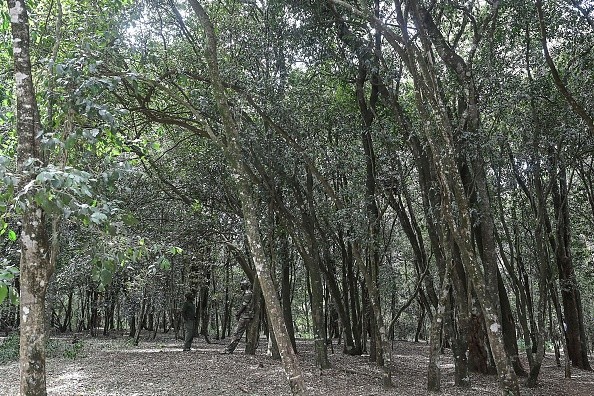New research has linked the northward shift in Earth's coldest forests to rising temperatures. These shifts have prompted a lot of concerns about biodiversity, high risk of wildfires, and worsening impacts of climate change on northern communities.

Shifting of Earth's Coldest Forests
According to the University of Northern Arizona University research, due to climate change, the cold forest is shifting northward, increasing the risk of wildfires and placing the northern community in danger.
An article was published Thursday in Global Change Biology authored by "Satellite observations document trends consistent with a boreal forest biome shift."
The boreal forest, also referred to as the taiga or snow forest, is one of the world's largest biome that consists of pines, spruces, and larches, it is nearly 9,000 miles across northern North America and Eurasia. This forest covers about 17 million square kilometers (6.6 million square miles) or 11.5% of the Earth's land area, as per Phys.org.
To investigate why the green vegetation in the forest has been brown for over two decades, various geospatial climate-related datasets of the boreal forest and 40 years of moderately fine (30m) resolution satellite observations were accessed.
Greening in plants refers to the healthy growth of plants and often occurs when the climate favors the plants and promotes their growth, unlike 'browning', which is the complete opposite. In browning, there is a lower rate of growth. Due to the climate hot and dry condition, there might be a massive decrease in growth and eventually the death of the plant, trees or shrubs.
Experimental Findings
From the observations gathered, the vegetations are greener towards the cold northern margins of the boreal forest, where there is increased vegetation growth and trees expansion towards the arctic and alpine tundra.
While on the warm southern margins of the biome, browning occurred due to the hot and drier conditions.
Logan Berner, the assistant research professor in the School of Informatics, Computing, and Cyber Systems (SICCS) said: "There is emerging evidence that climate change is causing boreal trees and shrubs to expand into the arctic and alpine tundra, while at the same time causing trees to become more stressed and die along the warm southern margins of the boreal forest," according to Scitech Daily.
Berner further stated the possibilities of the vegetation becoming greener due to the fertile nature of the soil or the level of nitrogen which is essential to determine the response of boreal vegetation to climate change.
Effect of These Shifts
Naturally, changes in vegetation would affect both plants and animals, especially wildlife species that depend solely on the forest for their source of food.
Also, the changes in the northern and southern margin vegetations could cause or increase the risk of more and more severe fires in the forest. It can also accelerate global warming and can affect the stability of carbon-rich permafrost soils.
Ways to reverse these changes are still yet unknown but according to Berner, this climate change is caused by greenhouse human gas emission.
Related Article : Urban Forests May be Storing More Carbon Dioxide Than They Emit
For more news, updates about climate change and similar topics don't forget to follow Nature World News!
© 2025 NatureWorldNews.com All rights reserved. Do not reproduce without permission.





